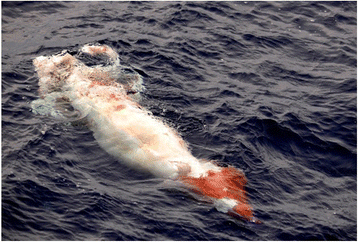The Giant Squid
 |
| Image of a deceased giant squid taken from a seismic vessel. By Luciana Leite - Leite, L., D. Campbell, L. Versiani, J.A.C.C. Nunes & T. Thiele (2016). CC BY 4.0. |
The giant squid has a very broad range having been in all of the world's oceans. Due to the depths at which they live at and how vastly unknown the oceans are, it is unknown how many are currently living. They are typically found around continental and island slopes but, most of these records come from the stomachs of sperm whales, strandings, and floaters, making their exact distribution unknown.
These cephalopods have adapted to the deep dark depths of their environment. Besides the feeding arms being twice the length of their body to capture prey, this creature also has eyes that are the size of a dinner plate. This helps them to see and pick up the bioluminescence of many of the other organisms living at such depths.
Comments
Post a Comment